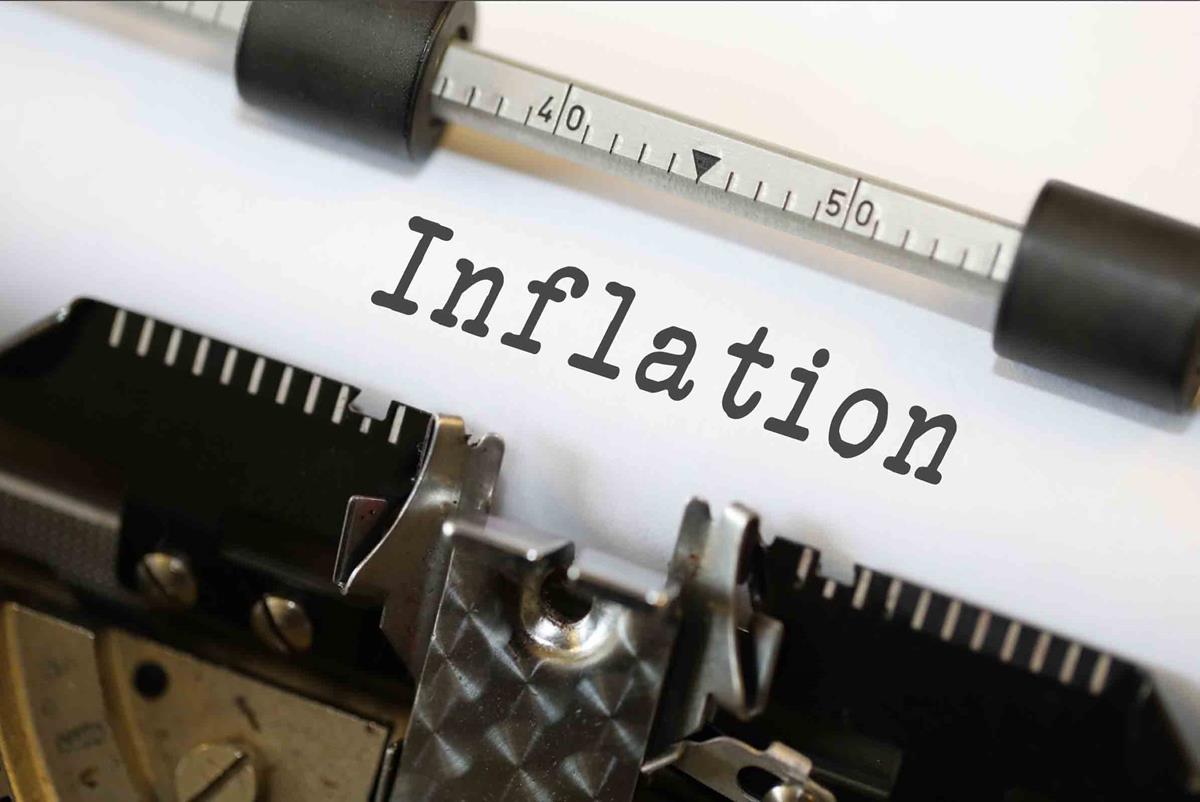IMF raises global inflation forecast for 2024 to 5.8%

By MG News | October 10, 2023 at 03:36 PM GMT+05:00
October 10, 2023 (MLN): Global inflation is forecasted to rise by 5.8% in 2024 as per the latest International Monetary Fund (IMF)’s report on the world economic outlook published on Tuesday.
To note, the IMF had forecasted an inflation of 5.2% for 2024 just three months ago.
On the other hand, global inflation is forecasted to decline steadily from 8.7% in 2022 to 6.9% in 2023.
However, these forecasts for 2023 and 2024 are revised up by 0.1%age point and 0.6%age point, respectively, and inflation is not expected to return to target until 2025 in most cases.
Risks to the outlook are more balanced than they were six months ago, on account of the resolution of US debt ceiling tensions and Swiss and US authorities’ having acted decisively to contain financial turbulence, the report noted.
The likelihood of a hard landing has receded, but the balance of risks to global growth remains tilted to the downside.
China’s property sector crisis could deepen, with global spillovers, particularly for commodity exporters.
Elsewhere, near-term inflation expectations have risen and could contribute—along with tight labor markets––to core inflation pressures persisting and requiring higher policy rates than expected.
More climate and geopolitical shocks could cause additional food and energy price spikes.
Intensifying geoeconomic fragmentation could constrain the flow of commodities across markets, causing additional price volatility and complicating the green transition.
Monetary Policy
There is little margin for error on the policy front.
The IMF has stressed the need for Central banks to restore price stability while using policy tools to relieve potential financial stress when needed.
Effective monetary policy frameworks and communication are vital for anchoring expectations and minimizing the output costs of disinflation.
Fiscal policymakers should rebuild budgetary room for maneuvering and withdraw untargeted measures while protecting the vulnerable, it further noted.
Reforms to reduce structural impediments to growth––by, among other things, encouraging labor market participation—would smooth the decline of inflation to target and facilitate debt reduction.
Faster and more efficient multilateral coordination is needed on debt resolution to avoid debt distress.
GDP growth
The global recovery from the COVID-19 pandemic and Russia’s invasion of Ukraine remains slow and uneven.
Despite economic resilience earlier this year, with a reopening rebound and progress in reducing inflation from last year’s peaks, it is too soon to take comfort.
Economic activity still falls short of its pre-pandemic path, especially in emerging markets and developing economies, and there are widening divergences among regions.
Several forces are holding back the recovery. Some reflect the long-term consequences of the pandemic, the war in Ukraine, and increasing geoeconomic fragmentation.
Others are more cyclical in nature, including the effects of monetary policy tightening necessary to reduce inflation, withdrawal of fiscal support amid high debt, and extreme weather events.
Global growth is forecast to slow from 3.5% in 2022 to 3.0% in 2023 and 2.9% in 2024. The projections remain below the historical (2000–19) average of 3.8%, and the forecast for 2024 is down by 0.1 percentage points from the July 2023 Update to the World Economic Outlook.
For advanced economies, the expected slowdown is from 2.6% in 2022 to 1.5% in 2023 and 1.4% in 2024, amid stronger-than-expected US momentum but weaker-than-expected growth in the euro area.
Emerging markets and developing economies are projected to have growth modestly decline, from 4.1% in 2022 to 4.0% in both 2023 and 2024, with a downward revision of 0.1 percentage point in 2024, reflecting the property sector crisis in China.
Forecasts for global growth over the medium term, at 3.1%, are at their lowest in decades, and prospects for countries to catch up to higher living standards are weak.
| Real GDP (Annual Percentage Change) | Projections | ||
|---|---|---|---|
| 2022 | 2023 | 2024 | |
| World Output | 3.5 | 3.0 | 2.9 |
| Advanced Economies | 2.6 | 1.5 | 1.4 |
| United States | 2.1 | 2.1 | 1.5 |
| Euro Area | 3.3 | 0.7 | 1.2 |
| Germany | 1.8 | -0.5 | 0.9 |
| France | 2.5 | 1.0 | 1.3 |
| Italy2 | 3.7 | 0.7 | 0.7 |
| Spain | 5.8 | 2.5 | 1.7 |
| Japan | 1.0 | 2.0 | 1.0 |
| United Kingdom2 | 4.1 | 0.5 | 0.6 |
| Canada | 3.4 | 1.3 | 1.6 |
| Other Advanced Economies3 | 2.6 | 1.8 | 2.2 |
| Emerging Market and Developing Economies | 4.1 | 4.0 | 4.0 |
| Emerging and Developing Asia | 4.5 | 5.2 | 4.8 |
| China | 3.0 | 5.0 | 4.2 |
| India° | 7.2 | 6.3 | 6.3 |
| Emerging and Developing Europe | 0.8 | 2.4 | 2.2 |
| Russia | -2.1 | 22.0 | 1.1 |
| Lath America and the Caribbean | 4.1 | 2.3 | 2.3 |
| Brazil | 2.9 | 3.1 | 1.5 |
| Mexico | 3.9 | 32.0 | 2.1 |
| Middle East and Central Asia | 5.6 | 2.0 | 3.4 |
| Saudi Arabia | 8.7 | 0.8 | 4.0 |
| Sub-Saharan Africa | 4.0 | 3.3 | 4.0 |
| Nigeria | 3.3 | 2.9 | 3.1 |
| South Africa | 1.9 | 0.9 | 1.8 |
| Memorandum | |||
| World Growth Based on Market Exchange Rates | 3.0 | 2.5 | 2.4 |
| European Union | 3.6 | 0.7 | 1.5 |
| ASEAN-55 | 5.5 | 42.0 | 4.5 |
| Middle East and North Africa | 5.6 | 2.0 | 3.4 |
| Emerging Market and Middle-Income Economies | 4.0 | 4.0 | 3.9 |
| Low-Income Developing Countries | 5.2 | 4.0 | 5.1 |
Copyright Mettis Link News
Related News
| Name | Price/Vol | %Chg/NChg |
|---|---|---|
| KSE100 | 130,717.90 116.88M |
0.29% 373.87 |
| ALLSHR | 81,278.07 327.78M |
0.31% 254.08 |
| KSE30 | 40,033.82 51.84M |
0.31% 125.56 |
| KMI30 | 190,402.37 65.67M |
0.46% 867.36 |
| KMIALLSHR | 54,936.42 158.01M |
0.28% 152.76 |
| BKTi | 34,923.77 11.98M |
-0.05% -16.96 |
| OGTi | 28,583.25 10.54M |
1.02% 287.20 |
| Symbol | Bid/Ask | High/Low |
|---|
| Name | Last | High/Low | Chg/%Chg |
|---|---|---|---|
| BITCOIN FUTURES | 109,735.00 | 110,105.00 109,200.00 |
-550.00 -0.50% |
| BRENT CRUDE | 68.53 | 69.00 68.41 |
-0.58 -0.84% |
| RICHARDS BAY COAL MONTHLY | 97.50 | 0.00 0.00 |
0.75 0.78% |
| ROTTERDAM COAL MONTHLY | 109.20 | 110.00 108.25 |
1.70 1.58% |
| USD RBD PALM OLEIN | 998.50 | 998.50 998.50 |
0.00 0.00% |
| CRUDE OIL - WTI | 66.89 | 67.50 66.78 |
-0.56 -0.83% |
| SUGAR #11 WORLD | 15.56 | 15.97 15.44 |
-0.14 -0.89% |
Chart of the Day
Latest News
Top 5 things to watch in this week
Pakistan Stock Movers
| Name | Last | Chg/%Chg |
|---|
| Name | Last | Chg/%Chg |
|---|




 Trade Balance
Trade Balance
 CPI
CPI